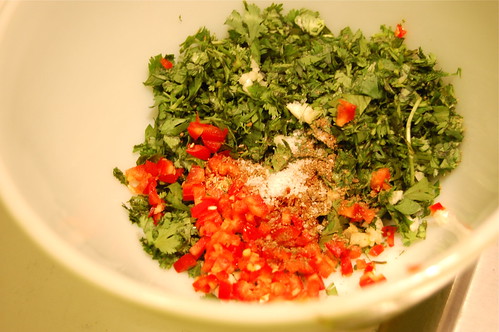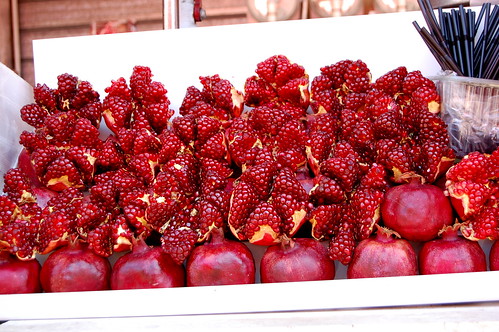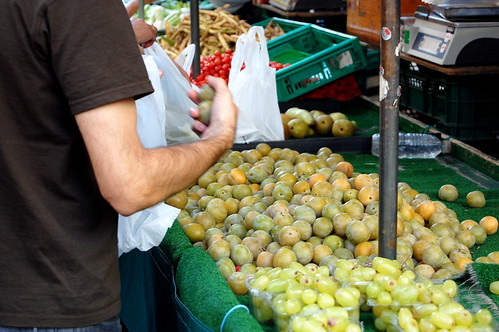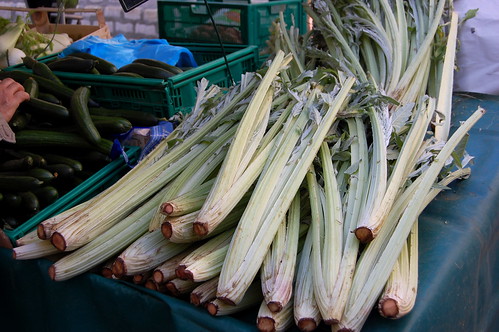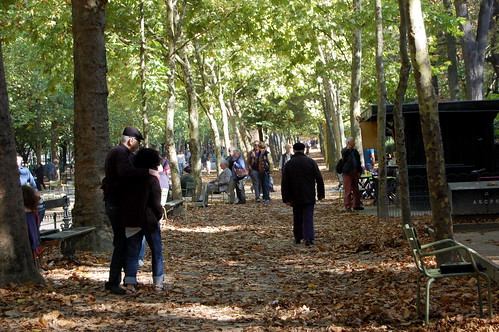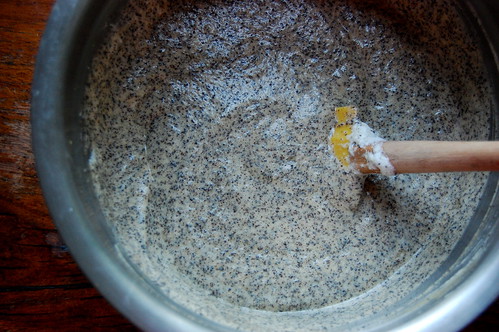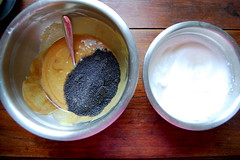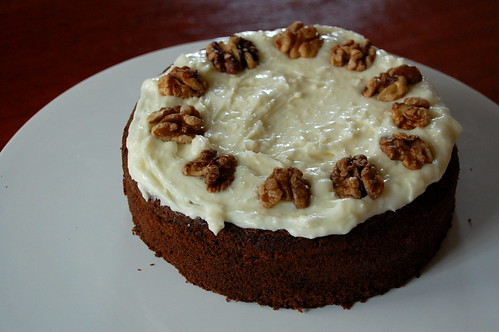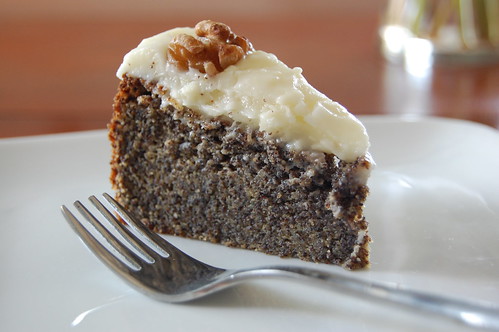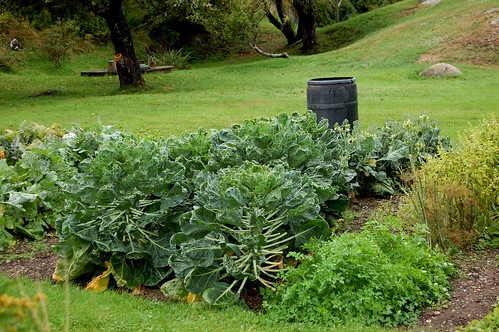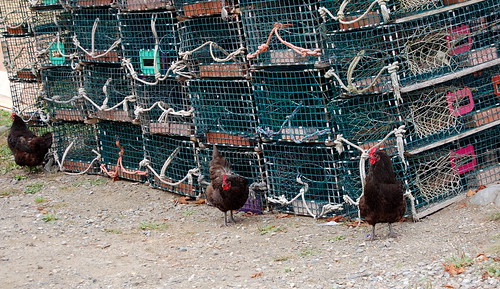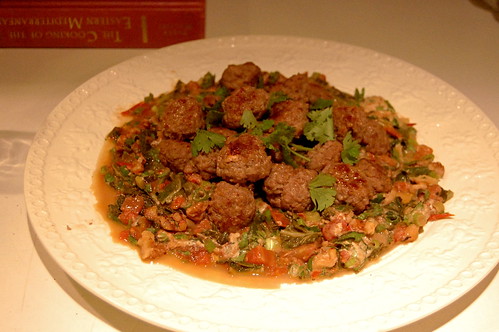
I'm going to start this off by saying, I don't think this recipe really worked. In fact, it seems almost cruel to be posting this now - I'm in Paris oggling the beautiful markets, the abundance of fall squashes, and remembering back to this recipe made on a dark night in my poorly-lit kitchen with a recipe that only half-way worked.
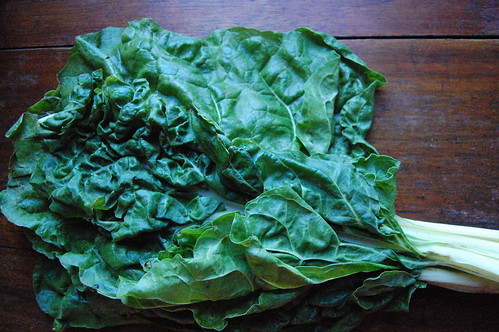
This is an uncommon but not unusual recipe in the Levant, pairing a garlicky swiss chard and tahini sauce with meatballs. Sometimes the meatballs are plain, sometimes they are more fancy, made with
kibbeh instead of meatballs. And sometimes this dish can be vegetarian, with chickpeas replacing the meatballs.
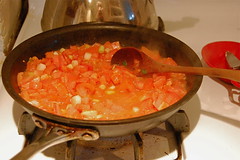
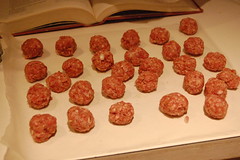
But here's the deal, I love the swiss chard and tahini sauce, it' the bright spot in this recipe. Friends, this part is a "put-it-in-the-recipe-file" keeper, it's garlicky and creamy and crunchy, and best of all good for you. I also like the meatballs, and really, who doesn't love a good meatball? But together, I just think this combination doesn't work. Maybe if you cooked the meatballs together with the chard for longer, maybe then the flavors would blend. But as it stands it's like two clashing armies battling it out for your taste buds.
So take my advice and just make the swiss chard sauce. Add in some chickpeas if you want the heft of a vegetarian main course. Serve it warm or cold, serve it over couscous or bulgur. Make some meatballs another time.
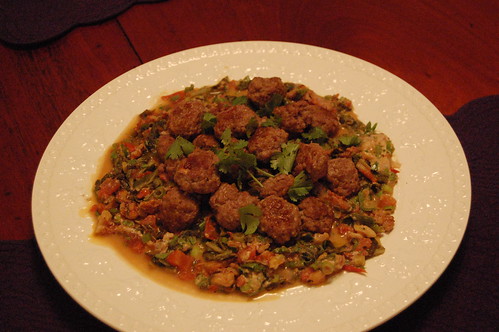
Meatballs in Swiss Chard and Tahini SauceAdapted from various sources. Please read the above post for recommendations.1 lb ground lamb
1 tablespoon salt
1 tablespoon baharat
1 onion, divided in half
olive oil salt
2 cups chopped tomatoes (canned or fresh)
2 gloves garlic, minced
1 bunch swiss chard
1.2 teaspooon Aleppo pepper
1/2 cup walnuts, toasted
1 recipe tahini sauce (see previous)
1. Grate half of the onion on the holes of a box grater. Mix together the meat, onion, salt, and seasoning, kneading the mixture with your hands until it is smooth and sticky. (Alternately, you can grind the onion in the food processor, then add the remaining ingredients, pulsing to combine.) Roll into meatballs about 1 inch in diameter and refrigerate.
2. Dice the remaining onion and mice the garlic. Heat some olive oil in a saute pan, then saute the onion and garlic until softened. Add the tomatoes, season with salt, and cook until slightly broken down and saucey, about 15-20 minutes. Set aside.
3. Meanwhile, set a pot of water to boil. Remove the ribs from the swiss chard and roughly chop. Add to the boiling water and blanch the chard to soften. Remove with a slotted spoon and chop finely. Add the chard and Aleppo pepper to the tomato sauce, return to heat, and cook until the chard is soft and cooked through. Set tomato sauce aside to cool down.
4. Heat up some oil in a very large frying pan, add the meatballs and cook the meatballs until well browned and cooked through (this may take quite a while). Work in batches if necessary.
5. Stir the half the tahini sauce into the now-cool swiss chard, and stir in the walnuts. Place the warm meatballs on top. Sprinkle with cilantro. Serve.

